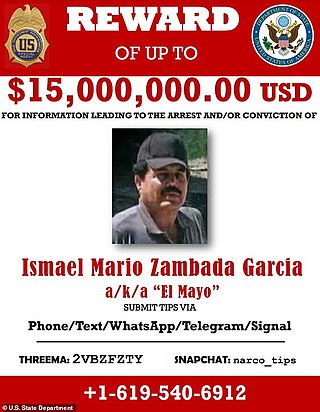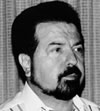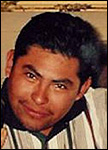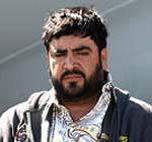
Osiel Cárdenas Guillén is a Mexican drug lord and the former leader of the Gulf Cartel and Los Zetas. Originally a mechanic in Matamoros,Tamaulipas,he entered the cartel by killing Juan García Abrego's friend and competitor Salvador Gómez,after the former's arrest in 1996. As confrontations with rival groups heated up,Osiel Cárdenas sought and recruited over 30 deserters from the Grupo Aeromóvil de Fuerzas Especiales to form the cartel's armed wing. Los Zetas served as the hired private mercenary army of the Gulf Cartel.

Ismael Mario Zambada García is a Mexican drug lord,co-founder and current top leader of the Sinaloa Cartel,an international crime syndicate based in Sinaloa. Before he assumed leadership of the entire cartel,he allegedly served as the logistical coordinator for its Guzmán-Zambada organization,which has overseen the trafficking of cocaine and heroin into Chicago and other US cities by aircraft,narcosubs,container ships,go-fast boats,fishing vessels,buses,rail cars,tractor trailers,and automobiles. As of early 2024,he has never been arrested or incarcerated and is the single last remaining fugitive of the List of Mexico's 37 most-wanted drug lords (2009).

The governors of the Mexican state of Quintana Roo,since statehood.

Gilberto JoséRodríguez Orejuela was a Colombian drug lord and one of the leaders of the Cali Cartel. Orejuela formed the cartel with his brother,Miguel Rodríguez Orejuela,JoséSantacruz Londoño,and Hélmer Herrera. The cartel emerged to prominence in the early 1990s,and was estimated to control about 80 and 90 percent of the American and European cocaine markets respectively in the mid-1990s. Rodríguez Orejuela was captured after a 1995 police campaign by Colombian authorities and sentenced to 15 years in prison. He obtained early release in 2002,and was re-arrested in 2003,after which he was extradited to the United States. There,he was sentenced to 30 years in prison,where he died in 2022.
The Norte del Valle Cartel,or North Valley Cartel,was a drug cartel that operated principally in the north of the Valle del Cauca department of Colombia,most notably the coastal city of Buenaventura. It rose to prominence during the 1990s,after the Cali and Medellín Cartels fragmented,and it was known as one of the most powerful organizations in the illegal drug trade. The drug cartel was led by the brothers Luis Enrique and Javier Antonio Calle Serna,alias "Los Comba",until its takedown in 2008 by the authorities of the Colombia,Venezuela and with cooperation of the United States DEA.
George Enrique Herbert is a Belizean gang leader and drug trafficker who worked with Mexican and Colombian drug cartels to distribute controlled drugs in Belize and the United States. He was convicted by a jury in Manhattan federal court on December 14,2004 on multiple cocaine importation charges. He is married and has one child.

Miguel Ángel Rodríguez Orejuela is a convicted Colombian drug lord,formerly one of the leaders of the Cali Cartel,based in the city of Cali. He is the younger brother of Gilberto Rodríguez Orejuela. He married Miss Colombia 1974,Martha Lucía Echeverry.

Luis Hernando Gómez Bustamante is a Colombian drug trafficker for the Norte del Valle Cartel,who was arrested in 2004 and,on July 19,2007 transported for extradition to the United States on charges of money laundering and drug smuggling. Gomez,also known as "Rasguño" is reported to have received his nickname after dismissing the wound caused by being grazed in the cheek by a bullet as "just a scratch". He is currently incarcerated at Federal Correctional Institution,Mendota with a projected release date of 2032.

Juan Carlos Ramírez Abadía is a drug trafficker who,until his capture,was one of the leaders of the North Valley Cartel,who was wanted on drug smuggling,murder and RICO charges in the United States of America. In addition to the trafficking of cocaine,it is believed Ramírez also participated in money laundering and trafficking of heroin. Through Ramírez’illegal enterprise,he has amassed a fortune estimated at $1.8 billion by the US Department of State. He has been cited as "... one of the most powerful and most elusive drug traffickers in Colombia" by Adam J. Szubin,Director of the U.S. Department of the Treasury's Office of Foreign Assets Control (OFAC).

Sandra Ávila Beltrán is a Mexican drug lord,dubbed "La Reina del Pacífico" by the media. She was arrested on September 28,2007,and was charged with organized crime and conspiracy to drug trafficking. Some charges were later dropped but she was still held on possession of illegal weapons and money laundering,pending her extradition to the United States. On August 10,2012,she was extradited to the United States to answer to criminal charges by the U.S. government.

Daniel Barrera Barrera,also known as El Loco,is a Colombian drug lord suspected of being the boss of the illegal drug trade in Colombia's eastern plains. He was arrested in Venezuela on September 18,2012 after trafficking drugs for more than 20 years. The arrest of the drug lord,according to news reports in the New York Times,was the result of a complex four-nation endeavor. Colombian President Juan Manuel Santos named Barrera "the last of the great kingpins".
Miguel Ángel Caro Quintero is a Mexican convicted drug lord and former leader of the Sonora Cartel,a defunct criminal group based in Sonora.
Carlos Mario Jiménez Naranjo aka "Macaco" is a Colombian former drug lord and paramilitary leader. Jimenez was a member of the United Self-Defense Forces of Colombia (AUC) paramilitary group which demobilized between 2005 and 2007. Jimenez ordered the assassination of numerous people in the region of the Santander and North Santander specially in the city of Barrancabermeja where his organization confronted and defeated the National Liberation Army (ELN) for the control of the territory. Jimenez was the commander in chief of the Central Bolívar Bloc of the AUC.

Jaime González Durán is a Mexican former drug lord who was one of the 14 original founding members and third-in-command of the criminal organization known as Los Zetas. A former Mexican Army elite soldier of the Grupo Aeromóvil de Fuerzas Especiales (GAFE),he was trained in counter-insurgency and locating and apprehending drug cartel members. At the age of 20,he joined the Armed Forces,on 15 November 1991,being accepted into the Army and Air Force with the military registration B-8987689 processed in Salinas Victoria,Nuevo León. He received specialized training by US forces and the Israeli Defense Force,integrating the Special Forces Airborne Group (GAFE),with the specialty of location,combat and apprehension of members of drug trafficking groups,but at seven years,four months and nine days of service defected as a specialized soldier,on 24 February 1999. After Osiel's arrest,González controlled a large-scale illegal drug distribution and transfer to the United States,mostly of cocaine and marijuana. He also controlled much of the illegal drug trade in the Mexican states of Nuevo León,Michoacán,Hidalgo,Veracruz,Tabasco,Quintana Roo and Mexico City. The Attorney General has cataloged him as one of the most dangerous and violent of organized crime members,and one of the most wanted by Mexican and U.S. justice.

Alfredo Beltrán Leyva,commonly referred to by his alias El Mochomo,is a Mexican convicted drug lord and former leader of the Beltrán-Leyva Cartel,a drug trafficking organization. He was one of Mexico's most-wanted drug lords. Beltrán Leyva was responsible for smuggling multi-ton shipments of cocaine and methamphetamine to the United States from Mexico and South America between the 1990s and 2000s. He worked alongside his brothers Héctor,Carlos,and Arturo.

Benjamín Arellano Félix is a Mexican former drug lord who alongside his brothers founded and led the Tijuana Cartel or "Arellano-Félix Organization”until his arrest in March 2002.
Javier Torres Félix is an imprisoned Mexican drug lord and former high-ranking leader of the Sinaloa Cartel,a drug trafficking organization. He is the brother of the deceased drug lord Manuel Torres Félix and the former right-hand man of Ismael "El Mayo" Zambada,a top cartel leader.
Alberto Orlandez Gamboa,also known as "El Caracol",is a Colombian drug lord and the former leader of the North Coast Cartel.

Carlos Landín Martínez,also known as El Puma,was a Mexican former police chief and convicted drug lord. He was a high-ranking member of the Gulf Cartel,a criminal group based in Tamaulipas,Mexico,and worked as the second-in-command of the cartel in Reynosa from 2005 to 2007. Landín Martínez was a trusted enforcer of the kingpin Gregorio Sauceda Gamboa. Among his responsibilities included managing international drug trafficking shipments from Tamaulipas to Texas,collecting taxes from independent traffickers who operated in his turf,and managing money laundering operations. Landín Martínez was also a commander in the Tamaulipas State Police,where he headed the homicide taskforce. According to a witness who testified against him in court,Landín Martínez worked for the Gulf Cartel while still employed by the state police.

María Antonieta Rodríguez Mata is a Mexican former police officer and convicted drug lord. She worked as a Tamaulipas State Police officer from 1992 to 1996. During her tenure in the police,she was subject to several investigations by the National Human Rights Commission for alleged human rights violations. In the late 1990s,she became involved with the Gulf Cartel,a criminal group based in Tamaulipas,Mexico,after being hired to work under the kingpin Osiel Cárdenas Guillén. She was responsible for coordinating drug trafficking shipments from Colombia,Guatemala,and Mexico to the U.S. The drugs were often guarded by corrupt policemen and smuggled overland through Reynosa and McAllen,Texas. Her role in organized crime is unusual since she held a leadership role in the male-dominated Mexican drug trafficking industry.













